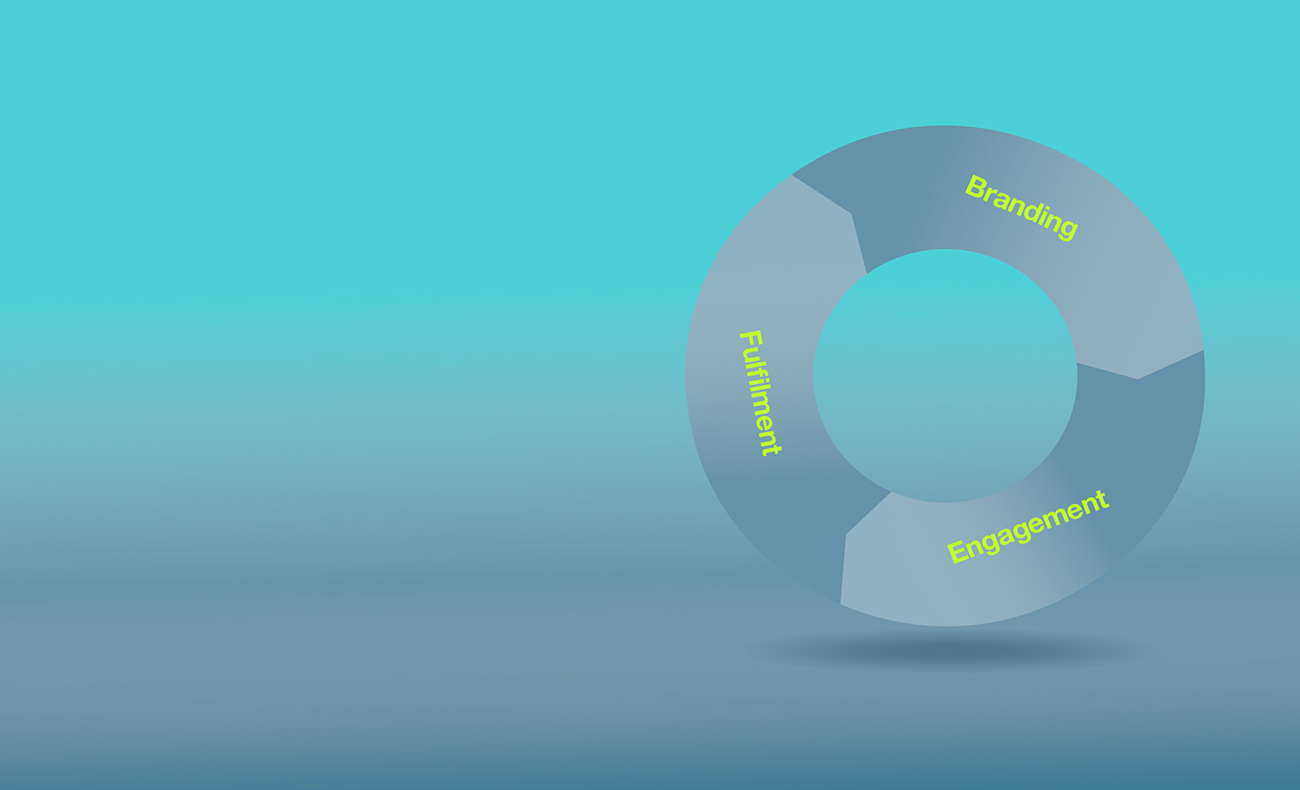
7 Lessons For Marketers From The Latest Campaigns
March 30, 2016
While for many the last three presidential campaigns have been painful to watch, there’s key learning – both good and bad – for marketers to apply in crafting and executing our marketing plans.
If you want to establish a powerful and unassailable position, connect with core needs.
The reason why Donald Trump and Bernie Sanders drew disproportionately large crowds to their events is that they both tapped into the politically disenfranchised in a powerful way. While going about it with differing messages, these two polarizing candidates drew important support by connecting with these target’s core concerns. In the process, they fostered strong convictions that defy logic.
While it’s important to have a strategy, success often depends on tactical opportunism.
The successful candidates are masters at counterpunching. They rule the news cycle by taking advantage of events as they unfold. They thrive by listening carefully and responding quickly to capitalize on opportunities as they arise.
Differentiation and neutralization are equally important.
We all know it’s important to differentiate our offer from competition, but success in these races has been as much about neutralizing competitive advantages as it has been about differentiation. This one is tricky for there’s a fine line between success and alienation. But, it’s becoming increasingly clear that marketers need to bring neutralization messages into our narrative to help distinguish our offer, particularly if we’re challenging the status quo.
Authenticity remains critically important.
It’s important to remain true to who you are if you want to build meaningful connections. One of the most promising candidates going into the 2016 campaign was no longer a factor in the race because he morphed his persona three times in the course of the campaign. Targets sniff that out fast and quickly turn away if you fail the genuine test.
Mechanical repetition of key talking points can alienate targets.
Marketing today is about building a dialogue. That same candidate’s waterloo moment came in the midst of a national debate where he mechanically repeated his key talking points over and over in the face of critical onslaught. It turned many interested voters off and cost him valuable ground, which he never recovered. Targets want to be talked with, not at.
Influencers can be effective if they are credible.
We’ve seen a marked dilution of the impact of endorsement in these campaigns. Does that mean influencers are no longer valuable? Research tells us that third party endorsement remains one of the most powerful catalysts in the buying decision for both consumer and b2b targets. But, targets must believe the endorser’s message. They just can’t say it. It must be credible.
The impact of traditional marketing media is on the wane.
The most polarizing, yet successful candidate has leveraged free media and relied primarily on his social media of choice. This has worked gloriously for him. Targets are consuming media as they live today. New channels are reaching people more effectively than traditional channels. It’s time marketers take notice.
These are some of the key lessons I’ve taken away. I’m sure there are many more insights that each of you have gleaned from this process. I’d love to know what they are. Please share.
Posted under: Branding Strategy, Changes in branding
The Power of a Refresh
October 6, 2015
I use Asana – a wonderful productivity enhancing, program management app. Asana is entrenched as part of my everyday ritual. I can’t imagine living without it.
Yet, like most other habits, my relationship with Asana is largely back of mind. The app is an important tool, but I rarely consciously think about it.
This week, Asana launched a very well done refresh, including a fresh new logo redesign. Interestingly, the net effect brought the brand front of mind for me again.
I was reminded how central Asana is to my everyday work life. I went to the blog and the website and discovered new features that are even more helpful. I learned and appreciated more than I have in the past year. The brand refresh helped renew my relationship.
My experience with Asana is very similar to that I have with Apple and other important brands. A software or hardware refresh often has the same impact. I learn more. I’m reminded of how important the brand is to my everyday life and I recommit to the brand again.
Given my ADHD, that all lasts just a few days. But, the impact is extremely powerful.
All of which leads me to believe that brands should think differently about how regularly to refresh.
Conventional wisdom suggests a five-year refresh cycle, at the minimum. I think that dated advice is no longer helpful.
Instead, I’d be looking to refresh some element of the customer experience twice yearly to keep customers actively engaged with your brand.
This doesn’t mean taking steps as dramatic as those taken by Asana. But, it does mean being much smarter and more aggressive in keeping your brand front of mind with your core marketplace.
I’d start today to craft a regular refresh plan and roadmap. Begin with an assessment of user experience needs and opportunities. Then craft a plan with logical stages – from regular clean-up to transformative regeneration. The return will more than offset the effort.
Posted under: Branding Strategy, Changes in branding, Customer journey mapping, Demand Driving Strategy

Managing Demand: Branding is Necessary, But Not Sufficient
March 3, 2014
During my long career at Interbrand, my colleagues and competitors operated under the misconception that branding was the center of the universe. All we needed was to build a strong brand for a client and their business would grow dramatically. Unfortunately, reality proved us wrong.
I spent the last two months working intensely with four great companies to catalyze growth and in not one of the cases were we focusing on making the brand stronger. We’d done that already, quite successfully in each case. Instead, we were focusing on building plans and programs to build stronger engagement with, and more effective fulfillment of, the core brand promises we put in place earlier.
Since we launched Catalyst three short years ago, it is compellingly clear that branding is necessary but insufficient in and of itself for managing demand. Instead, we must simultaneously master three integrated challenges – branding, engaging and fulfilling.
Branding: Establishing the Foundation
Effective branding establishes the foundational promise. We provide a solid platform for growth by articulating “who” the brand is, “what” it does and “why” it does it. This process matches the brand’s distinctive skills with the needs of its target audiences to articulate a promise that is relevant, credible and distinct. We use all of our finely honed skills to define the brand’s personality and reflect it through a unique communication style using both verbal and visual cues, managed consistently across the wide array of touch points the brand uses to communicate with its targets.
Engagement: Managing to Purchase
Engagement is the process of managing the customer’s journey from the initial need or desire that triggers the demand, through the search and evaluation process to the point where the purchase decision is made. Here, success is predicated on understanding the steps of the journey, the key milestones in the process and the touch points consulted to make decisions along the way.
This process has transformed dramatically with the rise of the internet and social media. Gone are the days when a brand could assume success by shouting through advertising and then selling hard with face-to-face interaction. Today b2b and b2c customers move through a thoughtful process of learning, evaluating and deciding that is best fueled by well placed information and well-timed problem solving.
Opinions of key influencers, from friends to experts; company owned, influencer sponsored or retailer provided web sites; social media, including Facebook, LinkedIn, Twitter, Google +, Pintrest, Tumblr, Instagram and Yelp; PR; and events are all critical touch points that need to be evaluated and used effectively to engage and guide targets through the process of making the decisions important to your brand.
This fresh understanding of the engagement challenge has influenced the creation of a new discipline – inbound marketing, elevated the importance of strong informational content and given rise to wide array of marketing tools and skills, including marketing automation and lead management, search engine optimization, and influencer relations. Used well, these tools provide us with the skills to better manage the engagement process and the insight to understand quickly what is working and what is not working in the mix. We can now optimize for effectiveness and make the brand work harder than ever before to build rich and rewarding relationships.
Fulfillment: Securing the Relationship
Branders and marketers are only now appreciating the need to closely manage the process of fulfilling the promise once the target is actually engaged. Delivery is more important than ever today because targets are constantly testing and revisiting their purchase decisions as they bring the new product or service into their lives.
Fulfillment involves understanding and managing the process that customers move through once they’ve made the decision to purchase, from initial integration, installation and testing through ongoing usage and the decision to commit to the product, service and brand. Again, rich informational content and effective problem solving drive success in this process.
The key touch points are very similar to those used in the engagement process, but they are used differently once the purchase decision is made. Here the emphasis is on enablement as customers seek ways to get more out of what they’ve purchased by themselves. It is also important to establish a safety net with opportunities for interaction should the challenge be more difficult than individuals are capable of managing on their own.
Effective enablement and support helps to validate the purchase decision and in the process helps to forge a more fulfilling relationship with the customer. Fulfilled customers buy more from a brand. They also tell others how fulfilled they are, which in turn influences engagement with new targets and helps make the brand stronger. It’s a self-renewing cycle.
The beauty lies in the fact that all through the process we can gather feedback, learn and refine to ensure that we’re making it better and better all along – improving the value of brand, engagement and fulfillment as integrated demand management tools.
With these three important tools, we can manage and grow demand. Handled separately, these tools are only limited in their ability to assure the desired result, but managed together as an integrated whole we can assure that we’re doing what’s necessary to spur growth.
There’s no question that to be effective, you need to start with a strong brand, but that’s not enough for managing demand. Don’t let any consultant advise you that it is. Work on all three together and you’ll make the impact you desire.
Posted under: Branding Strategy, Changes in branding, Demand Driving Strategy, Internal Brand Engagement, Uncategorized

The Wisdom of Engaging by Intruding
July 22, 2013
Have you been watching traditional TV lately? Does showing me the same ad for ED in every show I watch through the day really engage me? Does watching an ad twice in a single commercial break make me pay more attention? In today’s world, does the notion of a “commercial break” continue to be relevant for how we really live?
I feel like I’m watching the very end of an era. The world of advertising and advertisers are struggling to hold onto the last vestige of the Mad Men era, when the consuming public has moved to a whole new way of engaging with brands and making purchase decisions.
Think about it. Traditional advertising works by intruding into the experience that audiences are enjoying. It forces targets to stop doing what they want to do and listen to what the advertiser has to say. And this is supposed to be engaging.
How much sense does that make? Let’s build engagement by bugging people, interrupting them, forcing them to listen to what we have to say and keeping them from what they really want to do.
Today, we’re much smarter about how our targets prefer to be engaged. Study upon study shows that targets – both b2c and b2b – move through a learning process where they talk with people they trust, do their homework on brand websites and review sites, consider expert opinions and then make their choices.
It’s all on their terms. They control the decision process and determine how and when they consume information. Engagement is built through learning and experiencing. The preferred media is the web and the preferred communication style is informational. If you can make the information a little entertaining, all the better.
This is buttressed through recent studies that show us that company websites and the opinions of category experts are the only two media people trust more than they distrust. All other media – advertising, email, collateral, etc. – are more distrusted than trusted.
Research does tell us that traditional advertising still has a role. It is a particularly strong validating tool, especially for people who have made big purchase decisions and for the employees of companies that advertise. However, traditional advertising’s role as a catalyst for shaping decisions is on the wane. Fewer and fewer customers cite advertising as one of the touch-points that shaped their decisions as they moved through the selection process.
Given this, it’s time for marketers, business leaders, consultants and agencies to be much smarter and more creative in building successful engagement programs. We need to disrupt the status quo and leverage the touch-points that customers actually prefer to use in navigating through their purchasing process.
We’ll be far better served by teaching rather than interrupting. We need to be there when customers want us rather than force them to pay attention to us when they would rather be doing something else. When you think about it, it’s fairly obvious – isn’t it?
Posted under: Branding Strategy, Changes in branding, Customer journey mapping, Demand Driving Strategy, General

Branding sure has changed
January 14, 2013
Today, branding matters more than ever. But, the nature of branding has changed dramatically in recent years.
In the course of helping my good friend Jim Little create a “Ted” style presentation, we explored the ways that brand has changed over the years we’d been working together. These are the seven most significant ways that branding today has evolved to better drive demand.
1. It’s about relevance, not just awareness
We know that today people are crazy busy and besieged with messages wherever they turn. To pierce this clutter and get people to notice what we have to say we must speak directly to their needs. If people see our relevance, they’ll be actively aware of our existence. Without relevance, the best we can hope for is passive awareness, which can make us feel good, but won’t generate any meaningful economic value for our firms.
2. It’s about performance, not just positioning
It’s important for us to engage our targets with a meaningful promise. But, people today have no time for empty promises. We need to deliver exactly what we promise or they will turn to an alternative faster than we can say “good bye.”
3. It’s about dialogue, not monologue
Gone are the days when we could stand at the top of the mountain and shout at everyone we could afford to reach. Credibility is no longer simply a function of visibility. People today want to interact with our brands the way they would communicate in the course of any relationship. We need to relate to our targets in a meaningful way, interacting and responding to their needs, as the relationship requires.
4. It’s more about earned media than traditional advertising
Advertising still has its place, but we need to rebuild people’s trust in the medium. People trust what others say about us more than what we have to say. We need to be able to tap all of the new media sources available to give people the opportunity and the venue to open a dialogue with and about our brand. This will build their confidence in their learning and help them to make better decisions about forming a relationship with our brand.
5. It’s about retention, not just acquisition
It’s very important that we not only win business, but that we win our customer’s love and keep it. They’ll be loyal to us and will share their good feelings with those that they influence. We’ll grow our business and our brand on the basis of the security of these relationships and the new demand they help to generate.
6. It’s about advocacy, not just intention to purchase
This means there’s a big change in what we need to measure to ensure we’re being successful. When I started, the magic number was intent to purchase. Today, that’s just the beginning. Now, the most important variable is the degree to which people are willing to be an advocate for our brand to others.
7. It’s about informing and teaching, not selling
The most profound shift I’ve seen over the years is in how we communicate. People today are actively involved in decision making about brands. They seek the information they need to make better decisions and are turned off by “selling.” The brands that recognize this fundamental shift are going to be way more successful than those who don’t. In the sell, inform, solve continuum, inform is now the most important function. If we inform well, our clients will sell and solve for themselves.
So there you have it. As you can see branding has changed quite dramatically, but for the better. A brand today is all about the relationship. Managing a brand today comes down to understanding the fundamental rules around how people want you to behave within that relationship. Following these rules enables us to build strong, rich relationships that build mutual value and the spur the growth needed for our businesses to thrive.
Who knew that I would have been better off with a degree in psychology than marketing.
Posted under: Branding Strategy, Changes in branding, Demand Driving Strategy, General
